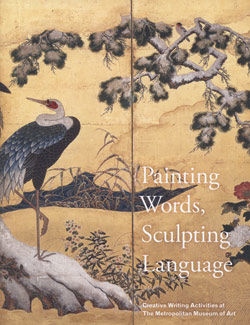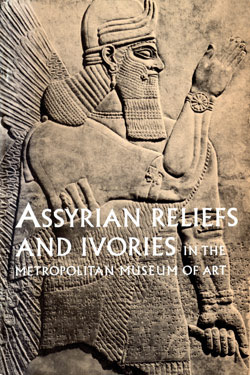Relief panel
Not on view
This panel from the Northwest Palace at Nimrud (ancient Kalhu) depicts a winged supernatural figure. Such figures appear throughout the palace, sometimes flanking either the figure of the Assyrian king or a stylized "sacred tree." The reliefs were painted, but today almost none of the original pigment survives. However, the reliefs themselves retain incredible detail, including intricate incised designs on many of the figures’ clothing.
In most rooms of Nimrud’s Northwest Palace, the reliefs showing magical figures had a single, overlifesize pictorial register, with the "Standard Inscription" in the center cutting across the imagery. The relief shown here, however, is at half-height because it comes from a room in which two registers of imagery were separated by a central band containing the inscription. It is not clear why the design is different in these rooms, although their position in the palace suggests they had special ritual significance. One theory is that the reliefs were divided in order to multiply the number of magical protective images in these special spaces; another theory is that, because of their importance, these rooms were decorated first and the artistic plan subsequently changed. The stone of the reliefs in these rooms often has a more translucent and mottled appearance than in other parts of the palace, although whether this distinction was the result of deliberate selection or a chance consequence of quarrying and shipments is unclear.
The figure depicted on the panel is eagle-headed and faces right, holding in his left hand a bucket and in his right hand a cone whose exact nature is unclear. One suggestion has been that the gesture, sometimes performed by figures flanking a sacred tree, is symbolic of fertilization: the "cone" resembles the male date spathe used by Mesopotamian farmers, with water, to artificially fertilize female date-palm trees. It does seem likely that the cone was supposed to hold and dispense water from the bucket in this way, but it is described in Akkadian as a "purifier," and the fact that figures performing this gesture are also shown flanking the king suggests that some purifying or protective meaning is present. The figure is richly dressed, with jewelry including a collar whose front bead appears pomegranate-shaped, a further collar with pendant tassels, armlets, and bracelets. Although we cannot know how these elements were originally painted, excavated parallels include elaborate jewelry in gold, inlaid with semi-precious stones. The figure carries two knives, tucked into a belt with their handles visible at chest level.
The figures are supernatural but do not represent any of the great gods. Rather, they are part of the vast supernatural population that for ancient Mesopotamians animated every aspect of the world. They appear as either eagle-headed or human-headed and wear a horned crown to indicate divinity. Both types of figure usually have wings. Because of their resemblance to groups of figurines buried under doorways for protection whose identities are known through ritual texts, it has been suggested that the figures in the palace reliefs represent the apkallu, wise sages from the distant past. This may indeed be one level of their symbolism, but protective figures of this kind are likely to have held multiple meanings and mythological connections.
Figures such as these continued to be depicted in later Assyrian palaces, though less frequently. Only in the Northwest Palace do they form such a dominant feature of the relief program. Also unique to the Northwest Palace is the so-called Standard Inscription that ran across the middle of every relief, often cutting across the imagery. The inscription, carved in cuneiform script and written in the Assyrian dialect of the Akkadian language, lists the achievements of Ashurnasirpal II (r. 883–859 B.C.), the builder of the palace. After giving his ancestry and royal titles, the Standard Inscription describes Ashurnasirpal’s successful military campaigns to east and west and his building works at Nimrud, most importantly the construction of the palace itself. The inscription is thought to have had a magical function, contributing to the divine protection of the king and the palace.
Due to rights restrictions, this image cannot be enlarged, viewed at full screen, or downloaded.



